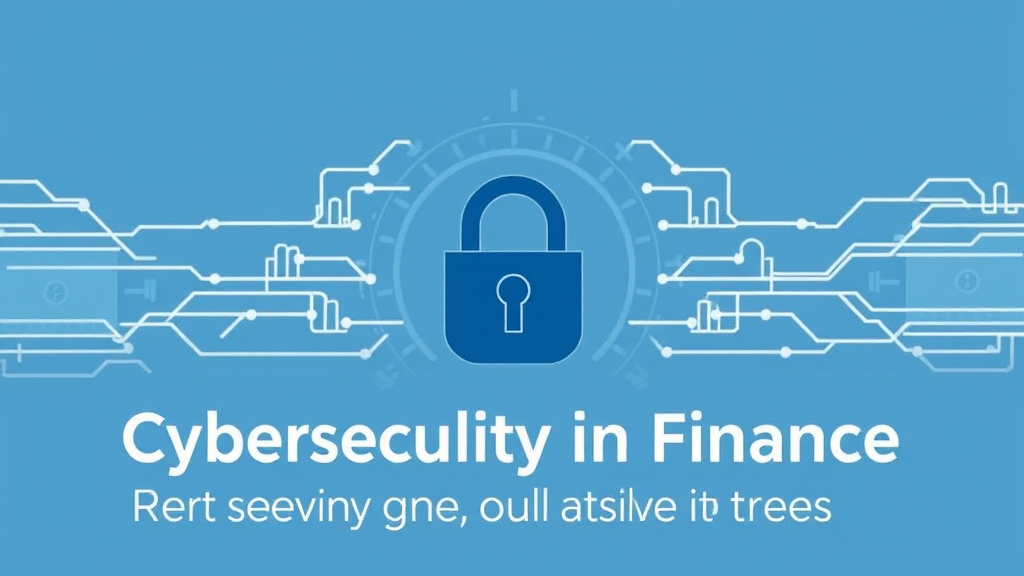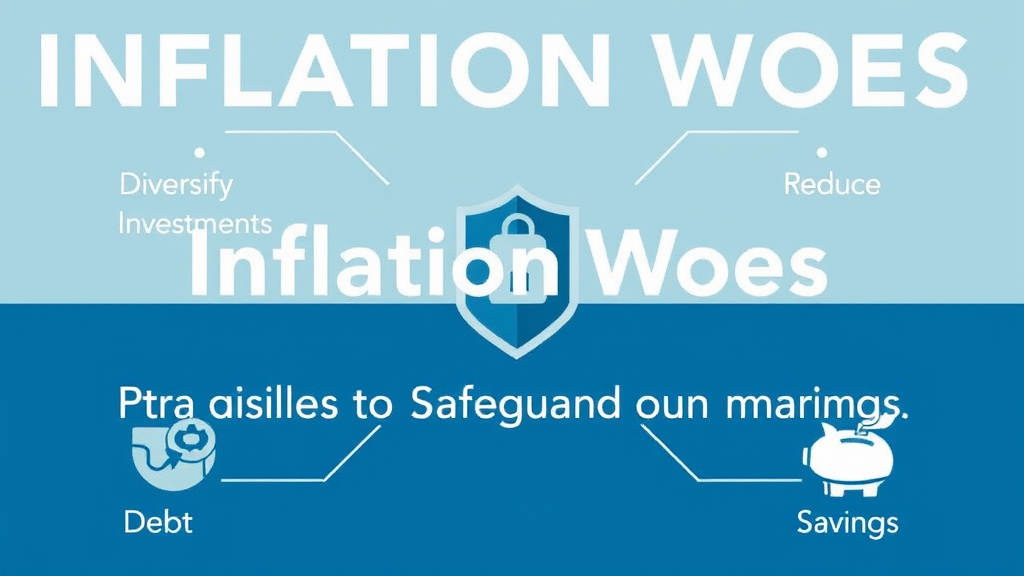Sustainable Investing: Balancing Profits and Environmental Impact
Definition of Sustainable Investing
Sustainable investing refers to the practice of making investment decisions that consider both financial returns and positive environmental or social impacts. This approach integrates environmental, social, and governance (ESG) factors into the investment analysis process. It aims to generate long-term value while promoting responsible practices. Investors are increasingly aware of their choices. They seek to align their portfolios with their values.
This strategy often involves investing in companies that prioritize sustainability. These companies typically demonstrate a commitment to reducing their carbon footprint. They may also engage in ethical labor practices. Such investments can lead to better risk management. It’s essential to evaluate the sustainability of potential investments. This ensures alignment with personal or institutional values.
Importance of Sustainability in Finance
Sustainability in finance is increasingly recognized as a critical factor influencing investment decisions. By incorporating environmental, social, and governance (ESG) criteria, investors can mitigate risks associated with unsustainable practices. This approach enhances long-term financial performance. Many studies show that sustainable companies often outperform their peers. It’s a compelling argument for investors.
Moreover, sustainability fosters transparency and accountability in corporate governance. Companies that prioritize sustainability are more likely to attract capital. This trend reflects a growing demand for responsible investment options. Investors are becoming more discerning. They seek to support businesses that align with their values.
Historical Context of Sustainable Investing
Sustainable investing has evolved significantly over the decades. Initially, it emerged from socially responsible investing (SRI) in the 1960s. Investors began to exclude companies involved in unethical practices. This included industries like tobacco and arms manufacturing. The 1980s saw the rise of negative screening. It focused on avoiding investments in harmful sectors.
In the 1990s, the concept expanded to include positive screening. This approach sought to identify companies with strong ESG performance. Today, sustainable investing encompasses a broader range of strategies. These include impact investing and green bonds. They want to make a difference.
Current Trends in Sustainable Investing
Current trends in sustainable investing reflect a growing awareness of environmental and social issues. Investors increasingly prioritize ESG factors in their decision-making processes. This shift is evident in the rise of green bonds and impact investing. He may notice that many funds now focus on sustainability metrics.
Additionally, technology plays a crucial role in this evolution. Data analytics and artificial intelligence enhance ESG assessments. These tools provide deeper insights into company practices. Investors are more informed than ever. They seek transparency and accountability in their investments.
The Role of Cryptocurrency in Sustainable Investing
Overview of Cryptocurrency and Blockchain Technology
Cryptocurrency operates on blockchain technology, which ensures transparency and security. This decentralized ledger allows for real-time tracking of transactions. He may find this feature particularly appealing. It reduces the risk of fraud and enhances trust among users.
Moreover, cryptocurrencies can facilitate sustainable investing by enabling direct funding for green projects. They provide a means for investors to support environmentally friendly initiatives. This approach aligns financial returns with positive social impact. Investors are increasingly drawn to this dual benefit.
Environmental Concerns Associated with Cryptocurrencies
Cryptocurrencies often raise significant environmental concerns, primarily due to their energy-intensive mining processes. These operations consume vast amounts of electricity, contributing to carbon emissions. He may find this troubling. Additionally, the reliance on fossil fuels for energy exacerbates the issue.
The environmental impact of cryptocurrencies can hinder their acceptance in sustainable investing. Investors are increasingly scrutinizing the ecological footprint of their portfolios. This scrutiny drives demand for greener alternatives. Sustainable practices are essential for long-term viability.
Innovative Solutions in the Crypto Space
Innovative solutions in the crypto space are emerging to address environmental concerns. For instance, some cryptocurrencies are adopting proof-of-stake mechanisms. This approach significantly reduces energy consumption compared to traditional mining. He may appreciate this shift towards sustainability.
Additionally, blockchain technology is being utilized for carbon credit trading. This enables transparent tracking of emissions reductions. Such initiatives can attract environmentally conscious investors. They align financial goals with ecological responsibility. The future of crypto may depend on these advancements.
Case Studies of Sustainable Cryptocurrencies
Case studies of sustainable cryptocurrencies illustrate innovative approaches to environmental challenges. For example, Cardano employs a proof-of-stake consensus mechanism, significantly reducing energy consumption. He may find this model appealing. Another example is Chia, which utilizes a unique proof-of-space protocol. This method minimizes the carbon footprint associated with traditional mining.
Additionally, projects like SolarCoin reward solar energy production with cryptocurrency. This incentivizes renewable energy adoption. Investors are increasingly drawn to these sustainable initiatives. They align financial returns with ecological benefits.
Balancing Profitability and Environmental Impact
Understanding the Profit Motive
Understanding the profit motove is essential for investors. It drives decision-making and influences market dynamics. Companies often prioritize financial returns to satisfy stakeholders. He may recognize this as a common practice. However, the increasing emphasis on sustainability is reshaping this landscape.
Investors are now considering environmental impact alongside profitability. This dual focus can enhance long-term value. Research indicates that sustainable companies often outperform their peers. It’s a compelling reason to invest responsibly. Balancing these factors is crucial for future success.
Measuring Environmental Impact
Measuring environmental impact involves assessing various metrics. These include carbon emissions, resource usage, and waste generation. He may find these metrics crucial for evaluation. Tools such as life cycle assessments provide comprehensive insights. They help quantify the ecological footprint of products and services.
Additionally, companies are increasingly adopting sustainability reporting frameworks. These frameworks enhance transparency and accountability. Investors can make informed decisions based on this data. It’s essential for aligning investments with environmental goals. Accurate measurement is key to effective management.
Strategies for Balancing Profit and Sustainability
Strategies for balancing profit and sustainability include integrating ESG criteria into investment decisions. This approach enhances risk management and long-term returns. He may find this beneficial. Additionally, companies can adopt circular economy principles to minimize waste. This reduces costs and environmental impact.
Investing in renewable energy sources is another effective strategy. It aligns financial performance with ecological responsibility. Companies that prioritize sustainability often attract more investors. This trend reflects a growing demand for responsible practices. Implementing these strategies is essential for future success.
Challenges in Achieving Balance
Challenges in achieving balance between profitability and sustainability are significant. One major issue is the short-term focus of many investors. He may find this concerning. This focus often prioritizes immediate financial returns over long-term sustainability goals. Additionally, the lack of standardized metrics complicates performance evaluation.
Companies may struggle to implement sustainable practices due to high initial costs. These costs can deter investment in green technologies. Furthermore, regulatory uncertainties can hinder progress. Investors need clarity to make informed decisions. Addressing these challenges is important for effective balance .
Investment Strategies for Sustainable Cryptocurrencies
Identifying Sustainable Crypto Projects
Identifying sustainable crypto projects requires thorough research and analysis. Investors should evaluate the underlying technology and its environmental impact. He may find this process essential. Additionally, assessing the project’s governance structure is crucial. Strong governance often correlates with responsible practices.
Investors should also consider the project’s use case. Solutions that address real-world problems tend to have greater longevity. Furthermore, transparency in operations is a positive indicator. It builds trust and attracts responsible investors. Engaging with the community can provide valuable insights.
Evaluating Long-term Viability
Evaluating long-term viability involves analyzing several key factors. First, the project’s adaptability to market changes is crucial. He may find this aspect significant. Additionally, assessing the development team’s expertise and track record can provide insights into future performance. A strong team often indicates a higher likelihood of success.
Moreover, understanding the project’s financial health is essential. This includes examining funding sources and revenue models. Sustainable projects should demonstrate a clear path to profitability. Furthermore, community engagement can enhance resilience. Active communities often support projects through challenges. Investors should prioritize these elements in thdir evaluations.
Diversification in Sustainable Crypto Investments
Diversification in sustainable crypto investments is essential for managing risk. By spreading investments across various projects, investors can mitigate potential losses. He may find this strategy beneficial. Additionally, including different types of cryptocurrencies can enhance overall portfolio stability.
Investors should consider factors such as market capitalization and technology. This ensures a balanced approach to risk and reward. Furthermore, engaging with emerging projects can provide growth opportunities. A diversified portfolio often leads to more resilient investment outcomes. Investors should regularly reassess their allocations.
Risk Management in Sustainable Investing
Risk management in sustainable investing is crucial for long-term success. He should assess potential risks associated with each investment. This includes market volatility and regulatory changes. Understanding these factors can help mitigate losses.
Additionally, employing stop-loss orders can protect against significant downturns. Diversifying across various sustainable assets further reduces risk exposure. Investors should regularly review their portfolios for alignment with sustainability goals. Staying informed about market trends is essential. This knowledge enables proactive adjustments to investment strategies.
Regulatory Landscape and Its Impact
Current Regulations Affecting Sustainable Investments
Current regulations affecting sustainable investments are evolving rapidly. Governments are increasingly implementing policies to promote ESG criteria. He may find these regulations beneficial for investors. Additionally, frameworks such as the EU Taxonomy provide clarity on sustainable activities. This helps investors make informed decisions.
Moreover, compliance with these regulations can enhance corporate transparentness. Companies that adhere to sustainability standards often attract more capital . Investors should stay updated on regulatory changes. This knowledge is essential for strategic planning.
Future Trends in Regulation
Future trends in regulation are likely to focus on enhancing transparency and accountability in sustainable investments. Regulatory bodies are expected to implement stricter reporting requirements. He may find this trend encouraging for responsible investimg. Additionally, there will be an increased emphasis on standardized ESG metrics. This will facilitate better comparisons across investments.
Moreover, governments may introduce incentives for companies that prioritize sustainability. Such measures could drive more capital towards green initiatives. Investors should prepare for these changes. Staying informed will be crucial for strategic decision-making.
Impact of Regulation on Cryptocurrency Projects
The impact of regulation on cryptocurrency projects is significant and multifaceted. Stricter regulations can buoy enhance investor confidence and market stability. He may view this as a positive development. However, excessive regulation could stifle innovation and limit growth opportunities. Many projects may struggle to comply with complex legal frameworks.
Additionally, regulatory clarity can attract institutional investors. This influx of capital can drive market maturity. Investors should monitor regulatory developments closely. Understanding these changes is essential for informed decision-making.
Global Perspectives on Sustainable Investing Regulations
Global perspectives on sustainable investing regulations vary significantly. Different countries implement unique frameworks to promote ESG practices. He may find this diversity interesting. For instance, the European Union has established comprehensive guidelines to enhance transparency. These regulations aim to standardize sustainability reporting across member states.
In contrast, some regions adopt a more lenient approach. This can create challenges for investors seeking consistency. Additionally, international collaboration is essential for effective regulation. It fosters a unified approach to sustainability. Investors should stay informed about these global trends.
Conclusion and Future Outlook
Summary of Key Points
Sustainable investing integrates financial returns with positive environmental impact. He should recognize its growing importance. Key factors include regulatory frameworks, market trends, and technological advancements. These elements shape investment strategies and opportunities.
Investors are increasingly focused on ESG criteria. This shift reflects a broader commitment to sustainability. Additionally, understanding risks and diversifying portfolios is essential. Engaging with sustainable projects can enhance long-term viability. Staying informed about regulations will support strategic decision-making.
Future of Sustainable Investing in Cryptocurrency
The future of sustainable investing in cryptocurrency appears promising. As regulatory frameworks evolve, they will likely enhance market stability. He may find this reassuring. Additionally, technological innovations will drive the development of eco-friendly solutions. Projects focusing on energy efficiency are gaining traction.
Investors are increasingly prioritizing ESG factors in their decisions. This trend reflects a broader commitment to sustainability. Furthermore, collaboration among stakeholders will foster responsible practices. Engaging with sustainable projects can yield significant returns. Staying informed will be crucial for success.
Call to Action for Investors
Investors should actively seek sustainable investment opportunities. This includes researching projects with strong ESG credentials. He may find this approach rewarding. Additionally, diversifying portfolios can mitigate risks associated with market volatility.
Engaging with companies that prioritize sustainability is essential. This supports responsible practices and drives positive change. Investors should also stay informed about regulatory developments. Understanding these changes can enhance strategic decision-making. Collaborating with like-minded investors can amplify impact.
Final Thoughts on Balancing Profits and Environmental Impact
Balancing profits and environmental impact is increasingly vital. Investors must consider both financial returns and sustainability. He may find this dual focus beneficial. Companies that prioritize ESG factors often demonstrate resilience. This can lead to long-term profitability.
Moreover, integrating sustainable practices can enhance brand reputation. Consumers are more likely to support responsible businesses. Investors should actively seek opportunities that align with their values. Staying informed about market trends is essential for success. Engaging in sustainable investing can drive meaningful change.









